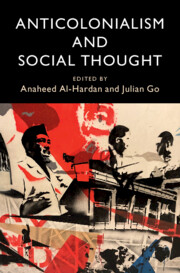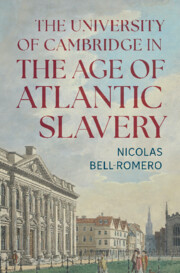Refine search
Actions for selected content:
547 results
15 - The King’s Subjects beyond the Realm
- from Part III - The King and His Subjects
-
-
- Book:
- The Cambridge Companion to Late Medieval English Kingship
- Published online:
- 03 November 2025
- Print publication:
- 20 November 2025, pp 298-320
-
- Chapter
- Export citation
12 - Race and Empire
-
-
- Book:
- Explaining the History of American Foreign Relations
- Published online:
- 24 October 2025
- Print publication:
- 13 November 2025, pp 241-262
-
- Chapter
- Export citation
Introduction
-
- Book:
- The Rise and Fall of Turkey's Democrat Party
- Published online:
- 23 October 2025
- Print publication:
- 06 November 2025, pp 1-24
-
- Chapter
-
- You have access
- HTML
- Export citation
Conclusions
-
- Book:
- In the Shadow of the Vatican
- Published online:
- 23 October 2025
- Print publication:
- 06 November 2025, pp 205-218
-
- Chapter
- Export citation
1 - ‘The principal ingredient necessary to form a good planter’: Education and the Making of a Transatlantic Elite
-
- Book:
- The University of Cambridge in the Age of Atlantic Slavery
- Published online:
- 12 September 2025
- Print publication:
- 30 October 2025, pp 19-48
-
- Chapter
-
- You have access
- Open access
- HTML
- Export citation
Introduction
-
- Book:
- The University of Cambridge in the Age of Atlantic Slavery
- Published online:
- 12 September 2025
- Print publication:
- 30 October 2025, pp 1-18
-
- Chapter
-
- You have access
- Open access
- HTML
- Export citation
Chapter 8 - Bloomsbury, South Asia, and Empire
- from Part II - Global Bloomsbury
-
-
- Book:
- A History of the Bloomsbury Group
- Published online:
- 09 October 2025
- Print publication:
- 23 October 2025, pp 121-137
-
- Chapter
- Export citation
Chapter 2 - An Atlas of Energy Poetics
-
- Book:
- American Modernism and the Cartographic Imagination
- Published online:
- 09 October 2025
- Print publication:
- 23 October 2025, pp 68-110
-
- Chapter
- Export citation
Chapter 16 - Bloomsbury, Nudity, and Race
- from Part III - Intimate Bloomsbury
-
-
- Book:
- A History of the Bloomsbury Group
- Published online:
- 09 October 2025
- Print publication:
- 23 October 2025, pp 259-279
-
- Chapter
- Export citation
Chapter 1 - Leadership in Third-Millennium Mesopotamia
-
-
- Book:
- Leadership in the Ancient World
- Published online:
- 14 September 2025
- Print publication:
- 16 October 2025, pp 14-33
-
- Chapter
- Export citation
‘To Complete the Romance of the Scene’: Three Previously Unknown Manuscripts of Guitar-Accompanied Song from the Nineteenth Century
-
- Journal:
- Royal Musical Association Research Chronicle ,
- Published online by Cambridge University Press:
- 16 October 2025, pp. 1-47
-
- Article
-
- You have access
- Open access
- HTML
- Export citation

The Recognition of Sovereignty
- Politics of Empire in Early Anglo-Scottish Literature
-
- Published online:
- 09 October 2025
- Print publication:
- 23 October 2025
20 - Christology and Political Theology
- from Part IIIb - Christology and Philosophical Theology
-
-
- Book:
- The Cambridge Companion to Christology
- Published online:
- 15 September 2025
- Print publication:
- 02 October 2025, pp 340-358
-
- Chapter
- Export citation
Chapter 33 - Race and Empire
- from Part V - Afterlives and Future Fields
-
-
- Book:
- Michael Field in Context
- Published online:
- 03 October 2025
- Print publication:
- 25 September 2025, pp 315-323
-
- Chapter
- Export citation
Writing Imperial Space in Letters
-
- Journal:
- Antichthon , First View
- Published online by Cambridge University Press:
- 24 September 2025, pp. 1-21
-
- Article
- Export citation
Chapter 3 - Marlowe’s Treasuries
-
- Book:
- Security, Fiscal Policy, and Sovereignty in Renaissance English Literature
- Published online:
- 04 September 2025
- Print publication:
- 18 September 2025, pp 58-91
-
- Chapter
- Export citation

Anticolonialism and Social Thought
-
- Published online:
- 16 September 2025
- Print publication:
- 25 September 2025

The University of Cambridge in the Age of Atlantic Slavery
-
- Published online:
- 12 September 2025
- Print publication:
- 30 October 2025
-
- Book
-
- You have access
- Open access
- Export citation
The role of the Banca Nazionale del Lavoro (BNL) in Fascist Italy’s economic strategy towards Franco’s Spain, 1936–43
-
- Journal:
- Modern Italy , First View
- Published online by Cambridge University Press:
- 12 September 2025, pp. 1-20
-
- Article
-
- You have access
- Open access
- HTML
- Export citation
7 - Policing the High Seas
- from Part III - Courts for a New Empire, 1816–1825
-
- Book:
- The Nation at Sea
- Published online:
- 28 August 2025
- Print publication:
- 11 September 2025, pp 228-265
-
- Chapter
- Export citation
